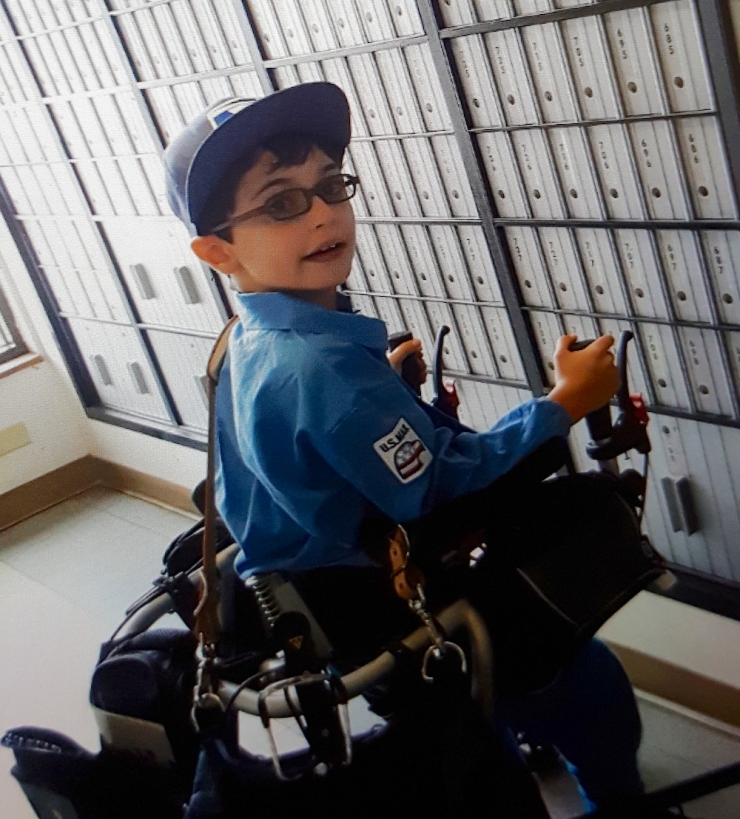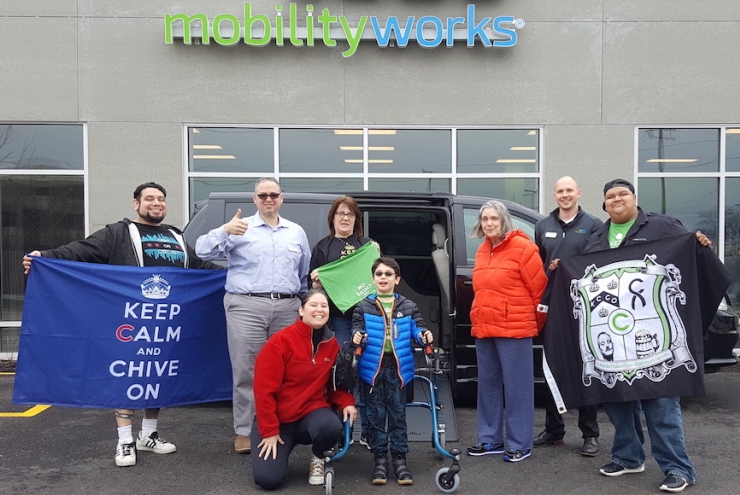The basics of kindness, cooperation, law and order, and potty humor are things most of us picked up around five years old and still use every day. I admit to also learning more than a few valuable lessons from Scooby Doo and the gang, along with a certain neighborhood kingpin named Fred McFeely Rogers. (You didn’t know that was his middle name either, did you?)

“When I was a boy and I would see scary things in the news, my mother would say to me, ‘Look for the helpers. You will always find people who are helping.’”
Firemen, policemen, bus drivers, mail carriers… all helpers. Everyday heroes doing their part for the greater good without much fanfare. Except from kids. Kids really dig these guys. Maybe it’s the uniform, maybe it’s the cool vehicle. Maybe it’s because kids know they can always trust the helpers if something goes wrong. Whatever the magic is, Mr. Rogers nailed it. Everyday heroes are awesome.

So, this is Avery. He’s ten. He loves Legos, trucks, construction, YouTube videos where kids dress up like policemen and firemen, mail carriers – his mailman Tony in particular – and shoes.
I can’t tell you how much I like this kid already.

*The exact moment a toddler with the cutest tiny glasses discovers the coolest cops ever.

NOT on the list of things Avery would recommend is spinocerebellar ataxia type 28 (SCA 28), a group of progressive neurological genetic disorders that cause eye muscle weakness, deterioration of the optic nerve, cognitive issues, and a laundry list of muscular disorders. Less than 0.000045% of the global population has SCA 28. It gets worse over time, and there is no cure.

“Avery hit all developmental milestones leading up to his 6 ½ month check up,” his mom Julie explained. Then, he started having tremors; mild at first, but increasing in length and frequency. He caught a virus, nothing major, but it completely disrupted his feeding. By the time his first birthday came, he could no longer sit up, stopped making adorable baby noises, had zero head control, and could barely tolerate even the smoothest, tiniest amounts of baby food.

Avery had his first MRI when he was a year old. Can you even?

The results came back “normal,” so the neurologist ordered loads of therapy for Avery: speech, physical, feeding, the whole nine. Would it be enough? Julie didn’t think so. Something was holding Avery back.. Where was his first step? His first word? The Cheerios ground into the carpet? Julie needed answers.

The time between Avery’s first and seventh birthdays was a blur of testing, doctors, and misdiagnoses. Cerebral palsy, CDG 1A (very rare, very unpleasant, trust me), microcephaly – all considered, then ruled out. His feeding issues continued, he had unusual and pronounced unsteadiness, and additional MRIs showed cerebellar atrophy. Julie pored over medical texts, consulted countless specialists, and generally pounded on doors.

“Medical experts around the world would respond with either the shrugging of the shoulders or the same pre-label of cerebral palsy. I had so many questions, yet very little answers,” Julie recalls. “The journey to a diagnosis was painful, time consuming, and required patience and lots of positivity.”
After his sixth birthday, doctors performed the Whole Exome Sequence Analysis Test on Avery’s DNA, which is pretty much the holy grail of genetic testing and makes all the other genetic tests quiver in fear. The results took a year to come back, and in the meantime, Avery paid a visit to Sick Kids Hospital in Canada. They suspected Avery had a mitochondrial disorder and gave him new medication. It made a big difference!

Avery started making progress. Things got better. He worked hard – very hard – to learn the fine motor skills the rest of us take for granted every day. Now he communicates through limited speech and gestures, uses a walker and a wheelchair to get around, goes to school and therapy five days a week, and has some really great friends.

Like his mailmanTony. Tony gave Avery an official postal worker uniform, and just this week be brought Avery a souvenir keychain from his vacation to the Philippines. Their friendship supersedes Avery’s limited speech and physical disabilities. It’s a classic everyday-heroes-kind-of-story, and you must have a cold, dead heart if you don’t think it’s outstanding.

Getting to school, all those appointments, and anything fun is a bit of a challenge for Julie and Avery. They haven’t had a car in two years. They rely on friends and family for transportation, sometimes they rent a car, sometimes they just don’t go where they need to go. To make matters worse, Avery’s rad new motorized wheelchair has been on hold at a nearby hospital since last summer, but they have no way to get it home.
We couldn’t sit back and let that go on, y’all.

Look for the helpers; you’ll always find people who are helping.

Of course Chive Charities gave Julie and Avery a new van. It’ll make all the difference in the world. The everyday heroes who donate monthly to the Green Ribbon Fund made this $50,000 grant possible, and we can’t thank them enough. They changed this family’s life in so many ways.
Julie said Avery fell madly in love with the motorized ramp when they visited the dealership to check out the vans. “He was so excited to control the ramp, and he went up and down the ramp for hours. I had to drag him out when it was time to go, he was so upset,” she laughed. Can’t you just see his face light up?

Chive Charities needs your help to bring this kind absolute delight to more amazing kids like Avery. Click HERE to become part of the Green Ribbon Fund making the world 10% happier every single day.






-2__small.jpg)


























































































































































